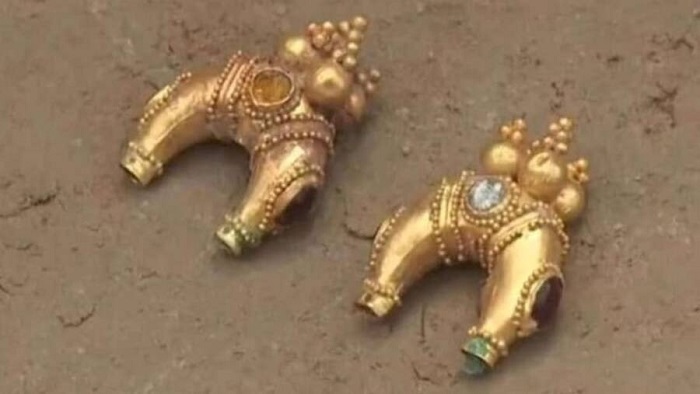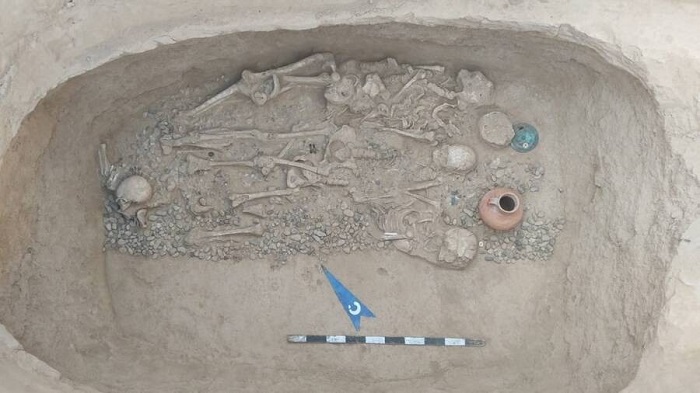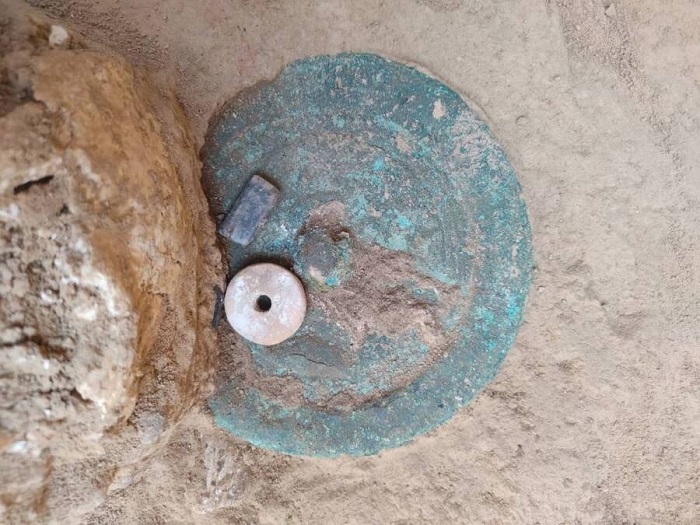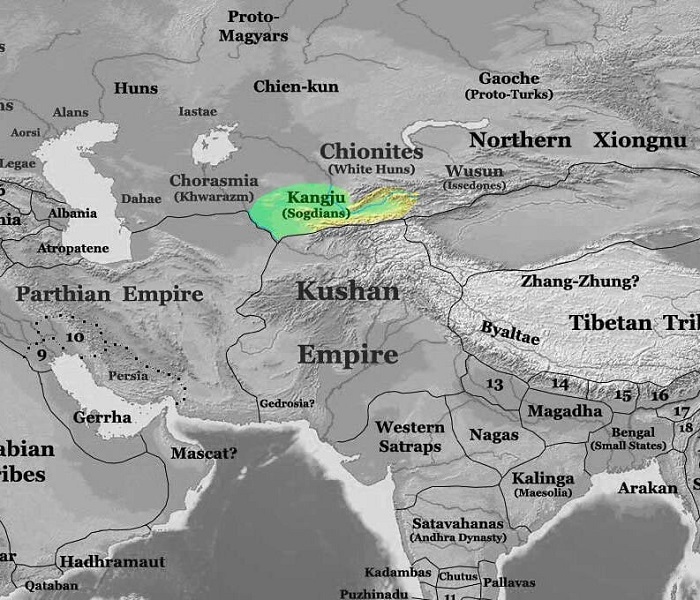Alongside the remains of a high-status woman, researchers found a Roman-style brooch, a bronze mirror from China, and a pair of gold earrings inlaid with turquoise and rubies.

Long ago, looters came across a set of ancient burials in present-day Kazakhstan. They plundered two of them and took off with unknown treasures. But they didn’t notice a third grave nearby. Now, however, archaeologists have excavated it, and discovered the wealth of grave goods within.
They uncovered gold jewelry, a large bronze mirror, and other items that shed light on elite life in the little-known Kangju state, which ruled the region between the fifth century B.C.E. and the fourth century C.E.
The Wealth Of Objects Found In The Ancient Kangju Grave

According to a translated statement from Ozbekali Zhanibekov South Kazakhstan Pedagogical University, the 2,000-year-old burial was discovered in Turkistan, Kazakhstan. Archaeologists found it stuffed with grave goods.
The grave included a pair of moon-shaped earrings decorated with blue amethyst and ruby from the first century B.C.E., a Roman fibula, which would have been used as a pin to fasten clothing, large and small beads to be worn on the hands, a shoe, a belt, a buckle, and arrowheads for hunting birds.
Remarkably, the archaeologists also uncovered a round bronze mirror that appeared to come from China during the Han dynasty (206 B.C.E – 220 C.E.).

These items reveal unique information about the mysterious Kangju state and the life of the woman buried in this grave thousands of years ago.
Life Inside The Mysterious Kangju State
According to the university statement, the items found in the grave suggest that the woman buried there must have been one of society’s elites.
“The bronze mirror found in the grave of a woman was highly valued and only rich and powerful people could use it,” the university statement explained. “Looking at the historical relic, it is possible to know that the deceased person held a high-ranking position.”

She appeared to have lived during the time of the Kangju state, a mysterious ancient power that ruled the region between the fifth century B.C.E. and the fourth century C.E.
“Looking at the found artifacts, it is possible to know that the [Kangju state] was in contact with strong and powerful empires,” the university statement notes. “Rome, Byzantium, Kushan…[and] China had equal diplomatic relations with the [Kangju state].”

Kangju state, the university statement further explains, was located along the Silk Road. It was thus advantageously placed for trade between East and West.
As such, the discovery of this ancient grave — and the wealth of grave goods within — offers a tantalizing peak at a little-known civilization and one of its elites. For those who could afford it, like the woman buried here, life in the Kangju state offered a taste of cultures from around the ancient world.
After reading about the stunning 2,000-year-old grave goods unearthed in Kazakhstan, look through these head-scratching ancient mysteries that continue to puzzle researchers to this day. Then, discover the stories behind the astounding Seven Wonders of the Ancient World.

